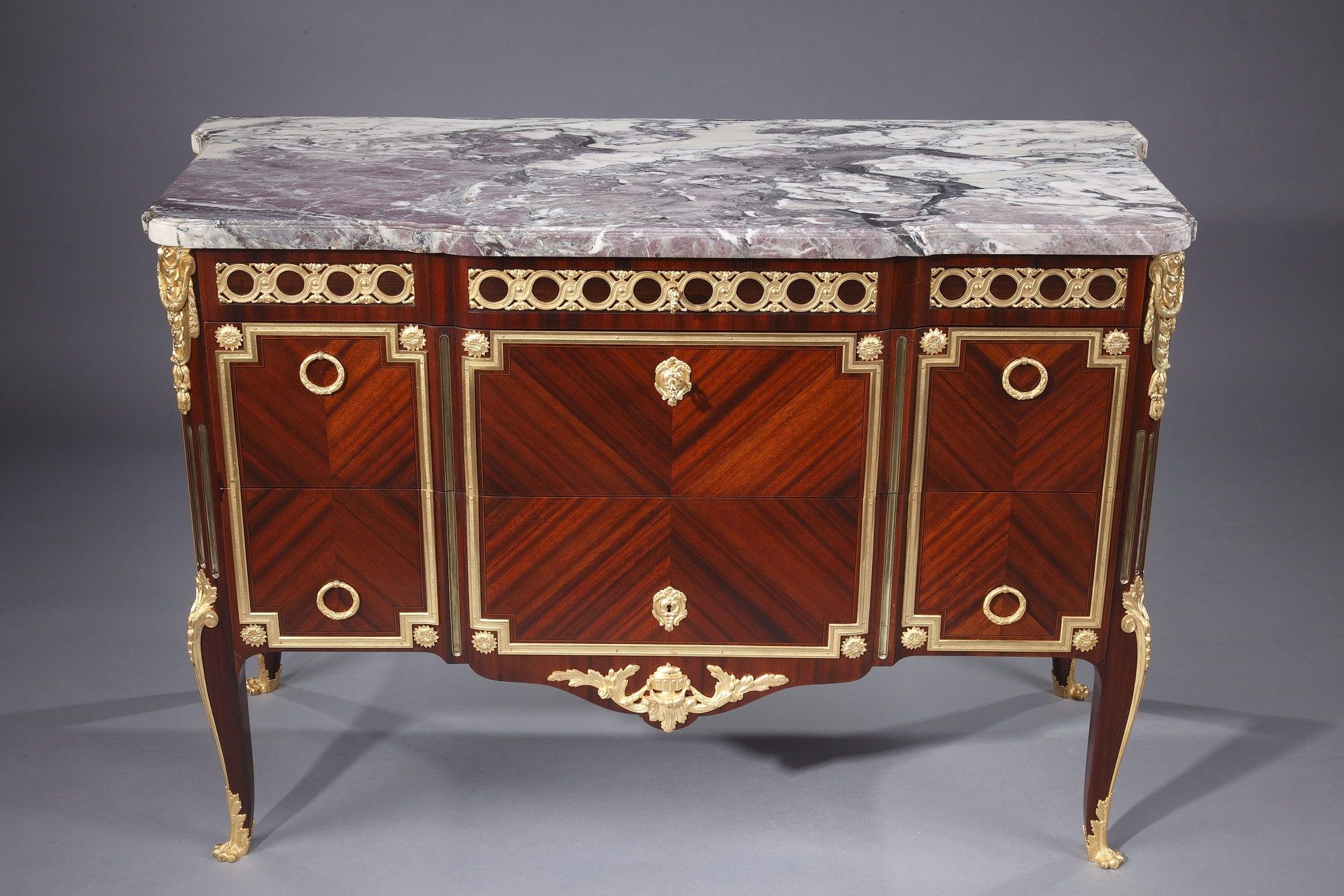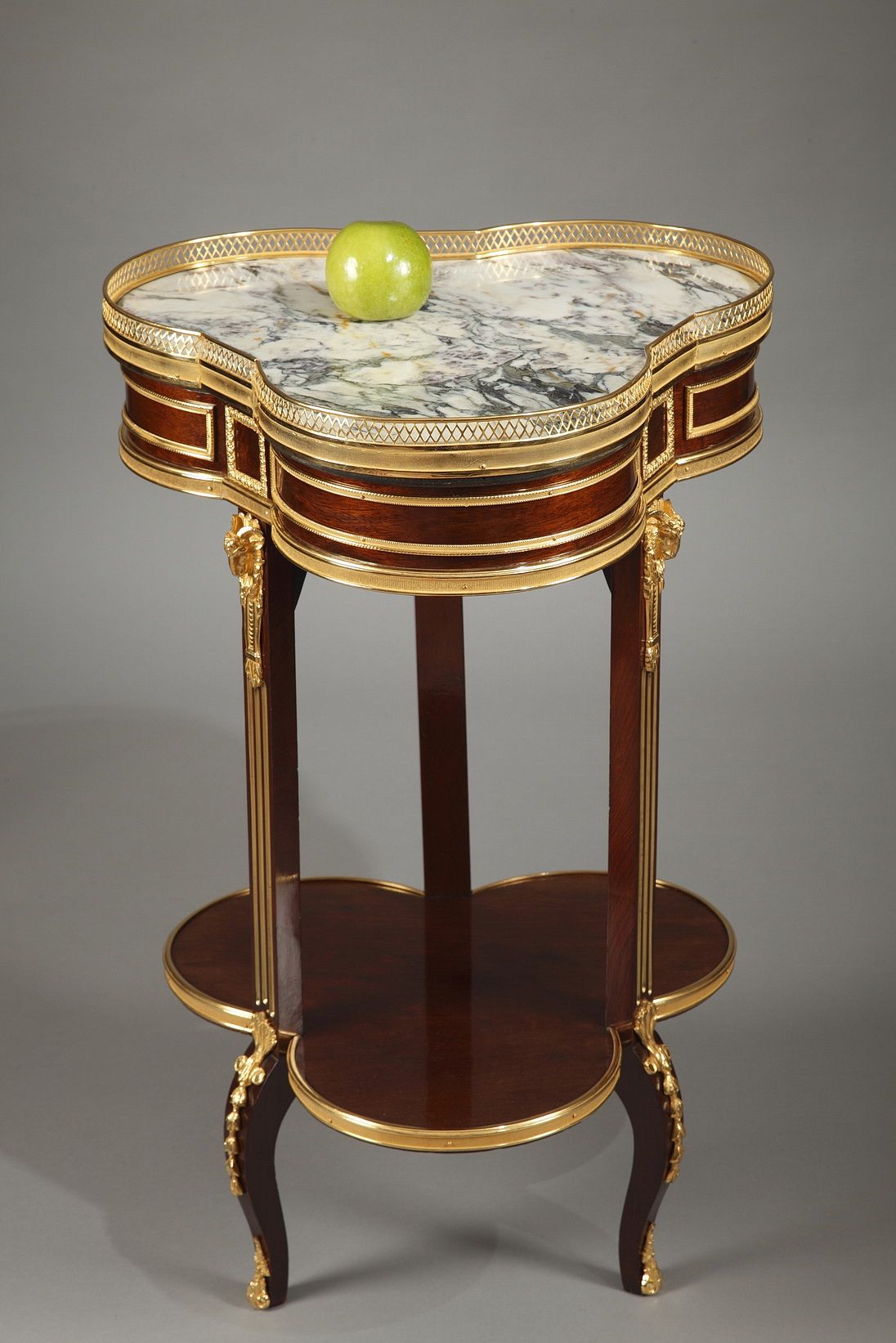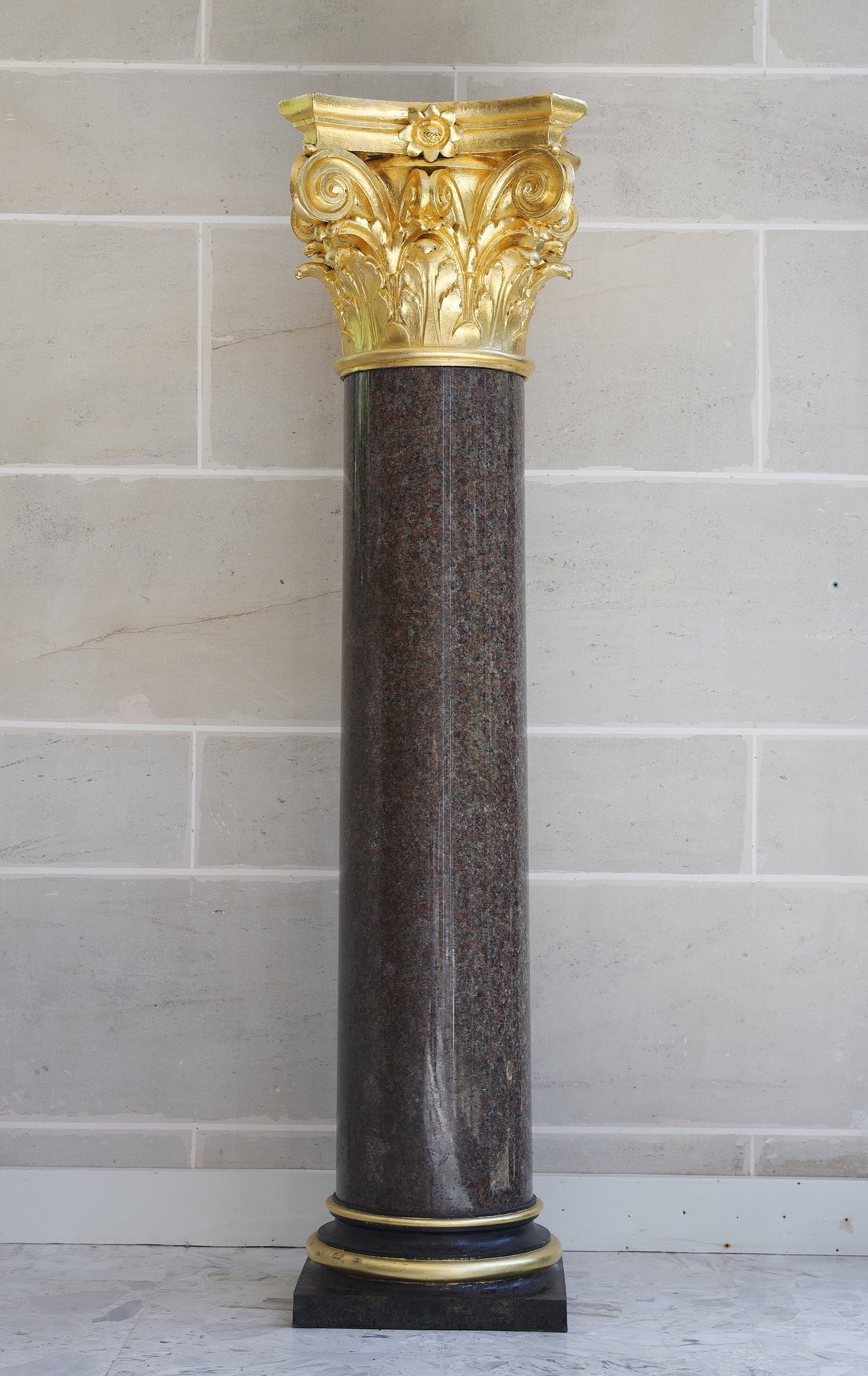The Transition style (1765-1775)
13.08.14
The term Transition refers to the stylistic evolution that, in the second half of the reign of Louis XV and at the very beginning of the reign of Louis XVI, was characterized by the abandonment of the curves and movement of Rocaille in favor of straight, clean lines and symmetry.
 Transition style chest of drawers by Mercier Frères
Transition style chest of drawers by Mercier Frères
Initially, the specific ornamental attributes of the Louis XV style were juxtaposed with the neoclassical ones of the so-called "Greek" style. Then, only the attributes inspired by Antiquity were retained: this was the advent of the neoclassical-inspired Louis XVI style .
To prepare his brother, Abel Poisson, Marquis de Marigny, for his future position as Director of the King's Buildings and Manufactures, the Marquise de Pompadour, Louis XV's favorite, sent him to Italy. He was accompanied on this trip by Abbé Blanc, an art lover and Rocaille detractor, Charles-Nicolas Cochin, an engraver, and the architect Jacques-Germain Soufflot. Visits to Italy's great ancient sites, including the recently-discovered Herculaneum (from 1738) and Pompeii (1748), enthralled the travelers who, on their return to Paris in the spring of 1751, advocated a return to the "Greek style" that would later come to be known as neoclassical.
The furniture
The "Greek" style was quickly adopted by ornamentalists, including Jean-Charles Delafosse and Jean-François de Neufforge, a Flemish architect who wrote a book of antique furniture models.
This style took off in 1755 and lasted until 1770. It influenced a number of joiners and cabinetmakers who, without totally abandoning Louis XV-style motifs, drew inspiration from these models to propose hybrid lines combining curves and straight lines, characteristic of the Transition style.
The return to straight lines and symmetry is achieved with lightness and elegance. After the extraordinary furniture creativity of the Louis XV style, the Transitional style modified the lines of furniture, but did not introduce any new ones. Secretaries, chests of drawers and desks have straight bodies with canted corners, a shape that heralds the Louis XVI style, while still often resting on curved Louis XV-style legs. The dryness of the lines is mitigated by the use of cut-offs, roundings and protrusions to avoid rigidity.
 Transition style flying table, 19th century
Transition style flying table, 19th century
Smaller pieces of furniture are always in vogue, including bonheurs-du-jour, kidney tables and small dressing tables.
Ornamentation
While furniture shapes did not undergo major changes, ornamentation evolved considerably. In reaction to the Rocaille style, the decorative vocabulary of classical architecture was revived. Whether on table belts or on the uprights of secretaries, the Greek style is evident in the ornamentation recently found on unearthed temples: friezes of posts, interlacing, Grecians, triglyphs and metopes, rosettes, palmettes, piasters, pearls, garlands and rais-de-cœurs.
Large neoclassical column
Laurel garlands in gilded bronze enliven chests of drawers and secretaries, while acanthus leaves can be found in clogs or drops.
Among the great cabinetmakers of the time were Jean-Henri Riesener, Bernard Van Risen Burgh and Claude-Charles Saunier. They abandoned exuberant floral marquetry in favor of more sober designs, or simple veneering to produce geometric motifs.

Jewelry box with marquetry decoration
The bronzes, which are still present, are becoming considerably lighter. They are generally supplied by the foundry.


